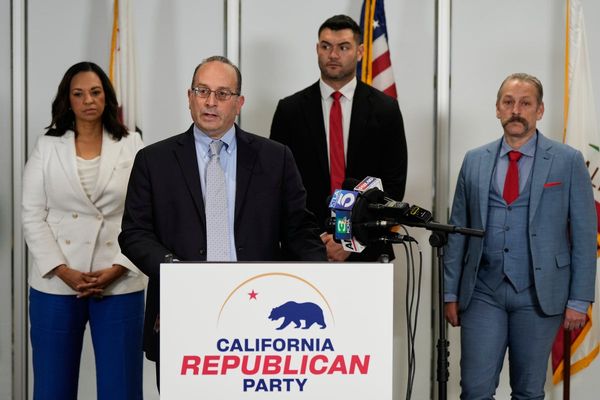
Jesse Gardner-Russell is paid $20 an hour to research how to restore vision to patients after a stroke – efforts that could contribute to curing blindness.
Fellow Australian students have developed a manual apparatus for resuscitating babies. They have trained an AI algorithm that can identify melanoma faster than a dermatologist.
And all have been expected to live on a punishingly low stipend while completing a PhD.
“People are shocked to find out how unlivable it is in most situations,” says Gardner-Russell, a PhD candidate at the University of Melbourne and head of the Council of Australian Postgraduate Associations. “To students, it’s absurd.
“There’s misalignment in how our country speaks about valuing building research capability when it pays students at the forefront of this work below the minimum wage … it becomes a labour of love.”
Experts are warning that a stipend languishing near the poverty line is turning the best and brightest away, risking the nation’s future economic prosperity.
The number of Australian students enrolling in PhDs has declined by almost 10% in less than a decade, a new report shows, with skyrocketing living costs and a lack of government support acting as major deterrents for potential candidates, almost 60% of whom are women.
The report, released by Universities Australia and the Australian Council of Graduate Research (ACGR) on Friday, found that domestic PhD enrolments had dropped by 8% between 2018 and 2023, despite Australia’s population growing by more than 7% in the same period.
The UA chief executive, Luke Sheehy, says the average PhD candidate is 37 years old and juggling significant financial responsibilities such as families and mortgages.
“It’s unacceptable to expect them to live in poverty while driving breakthroughs that fuel our economy and progress,” he says.
“They need confidence they’ll have a roof over their heads and food on the table. That’s not radical.
“[Raising stipends] was a missed opportunity in the last budget – we think [the government] can giddy-up and get on with it. We’ve hit crunch time and we’re going to go hard calling for this.”
The PhD stipend for 2025 is $33,511, barely catching up with inflation and well below the minimum wage of $47,627 a year.
It equates to $644 a week, or $16 an hour, requiring many students to move to part-time study to get by. As most scholarships only cover full-time study, those who take longer to complete their research are without income in their final stages.
Universities are able to raise the PhD stipend to a maximum of $52,352, but a ACGR survey found none have done so. The highest stipend is just over $40,000 at the University of Sydney, with the average sitting at $34,244.
Offering more competitive stipends is also a trade-off: by increasing stipends, universities reduce the number of PhD candidates they can afford to support.
UA and the ACGR are calling on the federal government to raise the PhD stipend to a sustainable level and expand the commonwealth funding pool to increase the number of fully funded scholarships available, particularly for international students.
The Universities Accord, commissioned by the government and handed down last year, similarly found that the stipend was an “economic disincentive” for the best students to become the next generation of researchers, recommending it be raised to become “more in line with global competitors”.
The stipend is now indexed to two years prior to the academic year, meaning it fails to keep up with cost-of-living increases. It has risen by 27.5% in a decade, compared with 38% for the median wage.
The report estimates a 2026 base rate of $36,000 would cost the government about $300m over four years.
The report also urges the federal government to extend eligibility for the commonwealth-funded parental leave scheme to PhD candidates, who are classified as students, not university employees, which excludes them from government benefits. The change is estimated to cost $5m annually.
Gardner-Russell says the lack of parental support is a “massive barrier of entry”. One of his colleagues had a baby this week, on a stipend of $38,500 a year.
The university’s childcare service costs $34,000 annually.
The ACGR president, Prof Louise Sharpe, says a 195% increase in honours degree completions since 2003 has not translated to a spike in postdoctorate research.
“As the cost-of-living crisis has increased, fewer domestic students are able to forgo a decent salary and take the stipend – that’s a real problem,” she says.
“We have a stereotype of PhD students as perpetual students, as esoteric, but nothing could be further from the truth. In practice, they’re Australia’s research engine – and at no time have we so desperately needed to train the next generation of leaders.”
There were 66,028 candidates enrolled in a PhD in 2023, the latest data shows, with a record 40% from overseas, representing a 14% increase since 2018 despite a dip during Covid (23,052 in 2018 to 26,227 in 2023).
At the same time, domestic enrolments dropped from 43,174 to 39,801.
Sharpe says international enrolments are propping up the domestic cohort but lack financial support once arriving in Australia, and can only receive 10% of a university’s federal government funding towards PhDs.
“Once they arrive, we’ve had reports of students hot bedding [sharing a bed and sleeping in shifts],” she says. “This is moral issue – allowing our best and brightest to be subject to these difficulties.”







